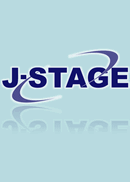All issues

Successor
Volume 21 (2001)
- Issue 4 Pages 413-
- Issue 3 Pages 315-
- Issue 2 Pages 221-
- Issue 1 Pages 1-
Volume 21, Issue 3
Displaying 1-5 of 5 articles from this issue
- |<
- <
- 1
- >
- >|
-
A Questionnaire to the Patient's Parents about Bone Grafting in a Preliminary TestSumimasa OHTSUKA, Fumihiko TOMITA, Kazunobu IMAMURA, Chung Yi CHENG, Y ...2001 Volume 21 Issue 3 Pages 315-322
Published: September 30, 2001
Released on J-STAGE: August 27, 2012
JOURNAL FREE ACCESSIn recent years, the treatment of cleft patients has changed largely, as a result of the introduction of new therapies, such as bone grafting, dental implantation and distraction osteogenesis. Even the Showa University Cleft Palate Team (SCPT) has seemed always prompt to adopt them. It is understandable that their patients, and their patient's parents, might be a little bewildered or anxious about treatment. Therefore, this study was undertaken to investigate the awareness of cleft patients and their parents about the nature of orthodontic treatment.
The subjects were the parents of cleft patients, who answered our questionnaire.
The following conclusions were obtained :
1. The parents were anxious about the bone graft operation, although they recognized the necessity of the procedure.
2. The parents of many patients who have not yet undergone bone grafting have strong feelings about the procedure.
3. Many parents of patients thought that orthodontists or surgeons should explain the bone grafting to them “soon after their child's birth”, while to the child “at the time when he/ she could comprehend it.”
4. The orthodontists admitted the need for bone grafting in the treatment of cleft alveolus, and recommend it to patients and their parents. However, when the result does not meet expectations, they find it frustrating to explain this outcome to patients, who will then need different orthodontic treatment in the future.View full abstractDownload PDF (1382K) -
Shigeru SAITO, Hideaki SAKAI, Masayasu IWASE, Masao NAGUMO, Yoshinobu ...2001 Volume 21 Issue 3 Pages 323-328
Published: September 30, 2001
Released on J-STAGE: August 27, 2012
JOURNAL FREE ACCESSThe elder sister visited to Showa University Dental Hospital with a complaint of anterior edge to edge bite at the age of 12 years. Her treatment was performed orthognathically because her antero-posterior jaw relation was skeletal class 3. Therefore, her orthodontic treatment could not finish until the age of 22 years, although her facial profile improved after the surgery. She was accompanied by her younger brother of an age 7 years with the chief complaint of the similar anterior crossbite when she visited us for the first time. However, his orthodontic treatment accomplished swiftly with a mini-positioner because of his malocclusion limited to dento-alveolus region.
Lateral cephalograms and pressure sensitive occlusal sheets were used to access the morphological changes including soft tissue profile and the stability of occlusion. Similarly from the previous studies, the ratio of mandibular body length to ramus height (Pog'-Go/Cd-Go) at an age of 12 years slightly exceeded 1.4, the borderline between surgical and non-surgical approach, in this case (sister). Mandibular set back surgery was considered to shorten postsurgical orthodontics and to acquire stable occlusion.View full abstractDownload PDF (2866K) -
Sonoko SUZUKI2001 Volume 21 Issue 3 Pages 329-336
Published: September 30, 2001
Released on J-STAGE: August 27, 2012
JOURNAL FREE ACCESSSkeletal Class III malocclusion, which is one of the most difficult facial deformities, is a very common skeletal malocclusion in the Japanese population. Orthognathic surgey is a common method for the treatment of skeletal Class III malocclusions in order to improve a skeletal discrepancy or facial deformity, however patients do not always accept surgical intervention.
This report illustrates a case of an adult female with a skeletal Class III malocclusion. The patient had an impacted upper right canine tooth and partially impacted lower bilateral premolar teeth.
The patient was treated with a multi-bracket system to achieve a class I molar and canine relationships without surgical intervention.
All treatment objectives were satisfied successfully. The facial contours improved as a result of mandibular clockwise rotation. The maxillary midline was coincident with the facial midline. Stable occlusal function was accomplished favorable.View full abstractDownload PDF (3516K) -
Kazuyuki ARAKI, Tomohiro OKANO2001 Volume 21 Issue 3 Pages 337-339
Published: September 30, 2001
Released on J-STAGE: August 27, 2012
JOURNAL FREE ACCESSDownload PDF (3295K) -
2001 Volume 21 Issue 3 Pages 405-407
Published: September 30, 2001
Released on J-STAGE: August 27, 2012
JOURNAL FREE ACCESSDownload PDF (466K)
- |<
- <
- 1
- >
- >|